Subitising does not end at Reception
- Dr Helen J Williams
- Dec 1, 2020
- 3 min read

Number bond fluency and subitising
This quick blog comes from a Twitter exchange about number bond fluency on KS2 (and early KS3).
I have written about fluency here, as I think it is entry different to “automatic recall”:
Here is the issue:
“I'm having a real problem in Yr 4 with children who don't know bonds to 20. I could just bombard them with practice but feel they need to know strategies (bridging etc.) to really understand. Time is an issue as we have X tables to complete, too.
…
I hadn't thought of going back as far as subitising but it's probably worth checking. I think I'll need to check number bonds below 10 (to help with bridging).”
My advice would always to be go back at least two ‘positions’ to be sure of firm ground and build from there. And enjoy it! So, there is nothing wrong with a quick re-visit (or maybe for some children, a first visit) to perceptual subitising to build their confidence and for us to assess where they are and what they are thinking and seeing.
Subitising comes from the Latin ‘to quickly recognise’ and is key to understanding the composition of numbers.

For a clear explanation of perceptual and conceptual subitising, consult The Oracle who are @DHClements and @JulieSarama: https://www.researchgate.net/publication/258933161_Subitizing_What_is_it_Why_teach_it
And then try this:
1 Quick glances at some different arrangements of small quantities under 6 and discuss with them what they see and how they see it. Use the wonderful overhead projector, or a visualiser and use real items you can move about. Be careful to use things the same colour so as not to distract from the instant recognition of the arrangement.


Use this little and often for children to quickly say how many they see. You can then build on this:
2 Explore this site: http://ntimages.weebly.com/photos.html
Accept different noticings. Invite different children to talk so that we ‘see what I see’. Ask children to repeat what others say, exactly. Check in with the person who described that this is accurate.
3
“But how is it that people see an eight-dot domino and 'just know" the total number? They are using the
second type of subitizing. Conceptual subitizing plays an advanced-organizing role. People who "just know" the
domino's number recognize the number pattern as a composite of parts and as a whole.” (Clements 1991)
This is important. Do not just deal with symbols at this point. This is a mistake many make. Stick with the images and the manipulatives, and work on children describing HOW they see the larger number. Don’t go too fast!
Use both organised and random arrangements. If you yourself try this one of purple counters, you will realise this is really quite hard, and it will take more than one glance. (Don't start with this one!).
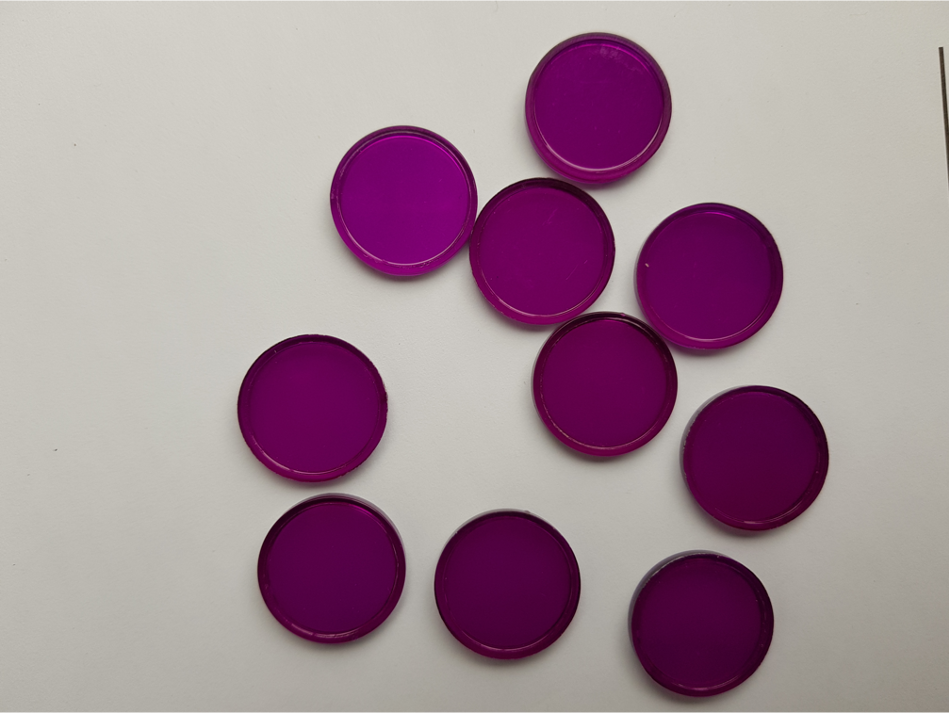
More organised is easier to get into. The following image is taken from "Making Numbers" by Griffiths, Back and Gifford (everyone needs a copy of this book, by-the-way)https://www.abebooks.co.uk/Making-Numbers-Griffiths-Rose-gifford-back/30565530169/bd?cm_mmc=ggl-_-UK_Shopp_Tradestandard-_-product_id=COUK9780198375616NEW-_-keyword=&gclid=CjwKCAiA8Jf-BRB-EiwAWDtEGl2JPkcB9EnFO3-DnqBwy5iPHgM9JgzHHTl8fCN4jNHpHRSlrj29yBoC-cAQAvD_BwE
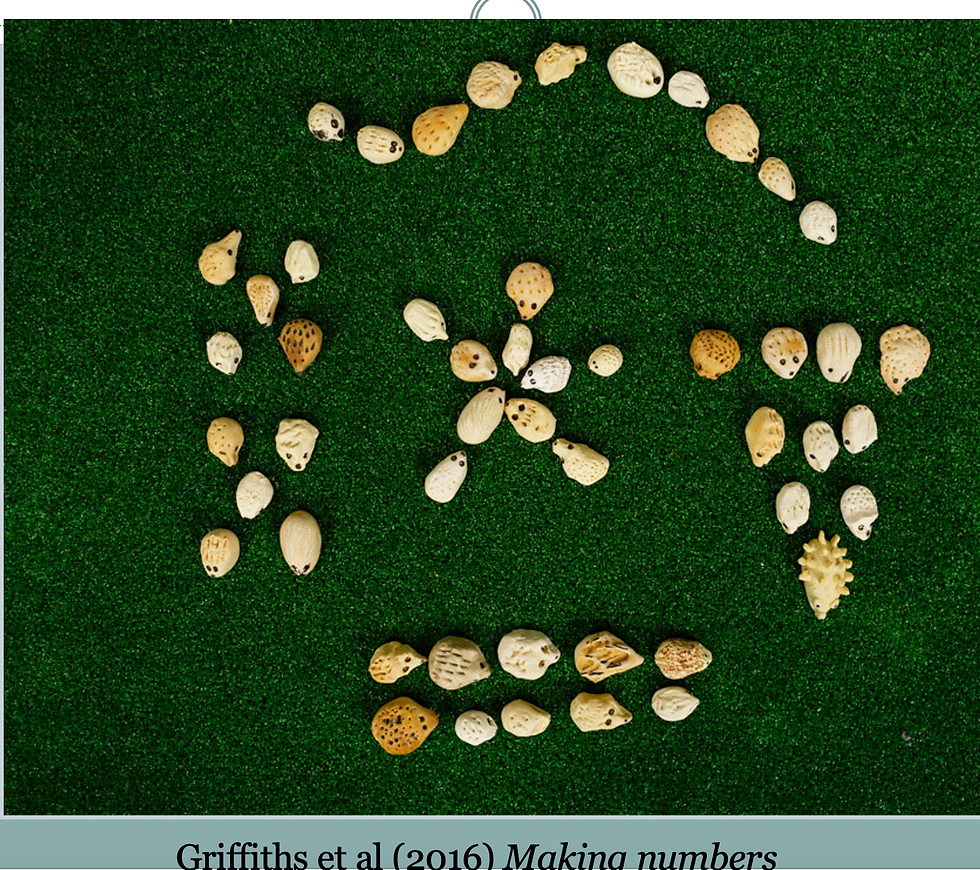
LATER, only when they are confident with this ‘instant recognition’, you can link in the numerals and write their description of the parts and the wholes as a number sentence, eg: The strawberries that head up this post could be seen as:
4 + 2 + 1 OR 3 + 3 + 1 OR ...
(Please don’t confuse this with the ubiquitous ‘part-part-whole’ circles diagram, which is very restrictive.)
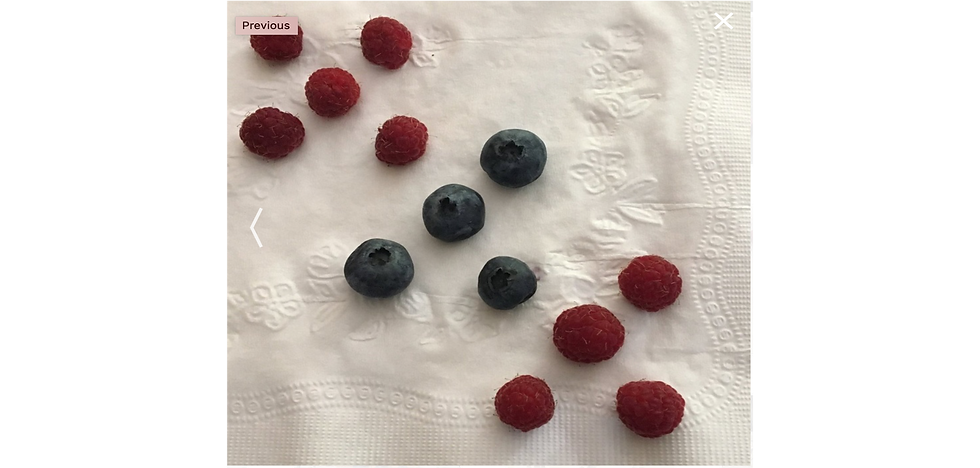
You can do lots of support and making sense work to vary this:
E.g:
- asking them to reproduce the arrangement with counters as well as say it
- use coloured counters to reproduce/re-configure the smaller numbers they see ‘hidden’ in the larger number
- play a Pairs card game with dot arrangements
- use 10frames...
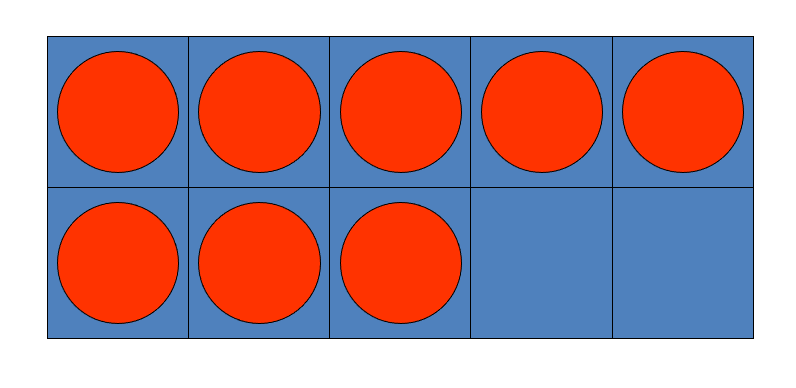
- and check out this site for ideas: https://www.learningtrajectories.org :
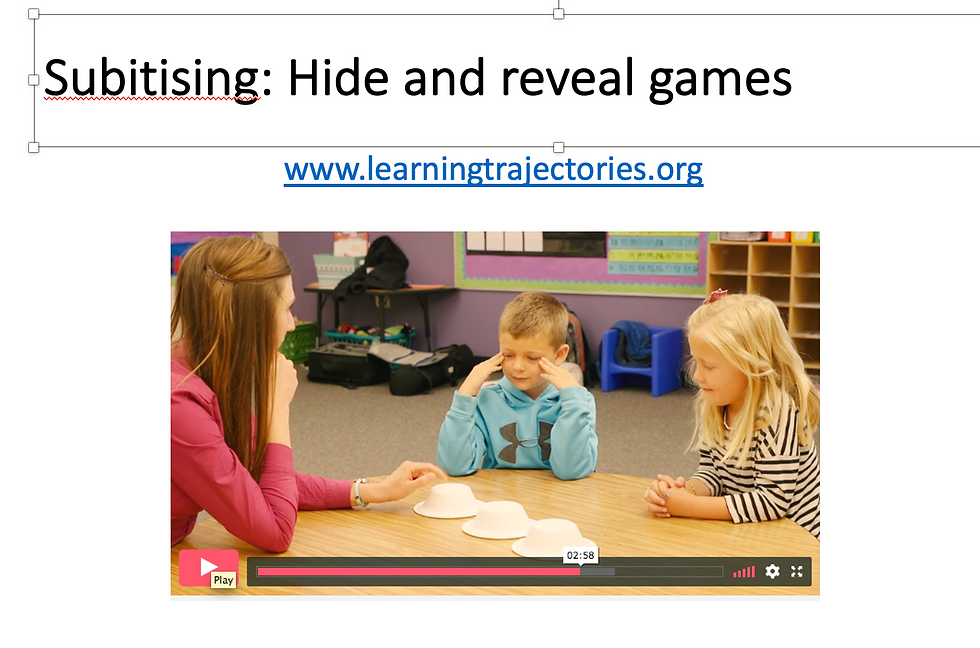
And watch this (buy the game if you can: Tiny Polka Dot):
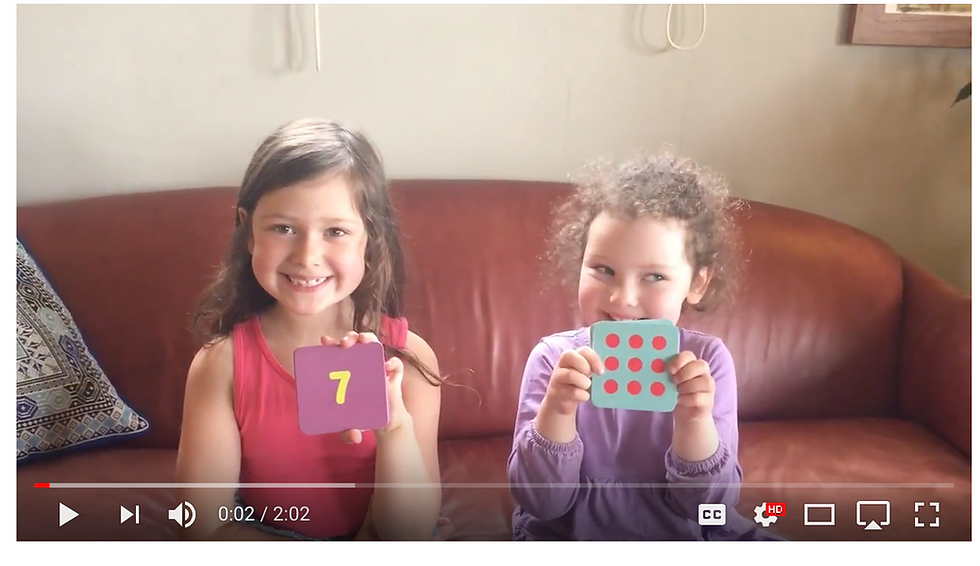
All this, over time, will make a real difference to your pupils’ understanding of and fluency with numbers.
Enjoy working on it together.
Keep it going.
Subitising does not end at Reception.





Comments